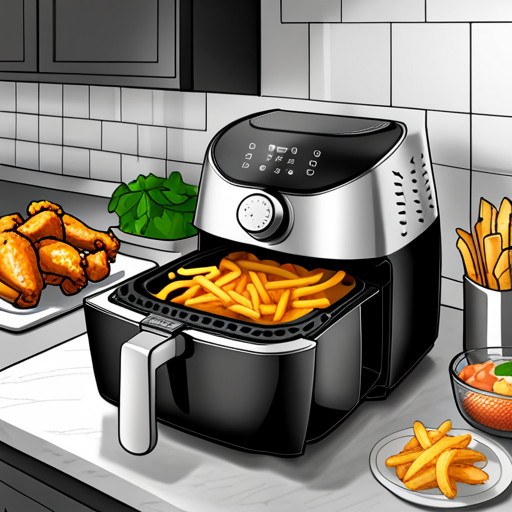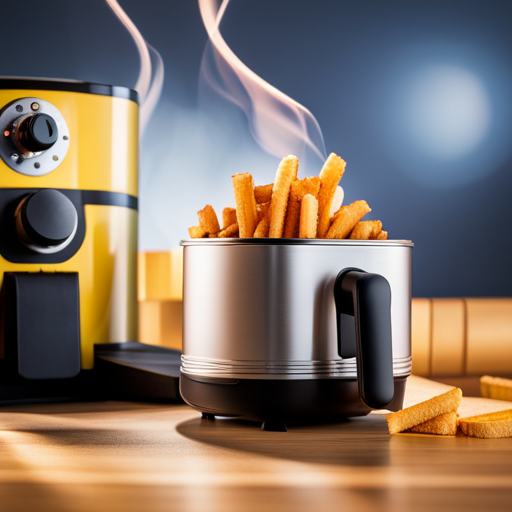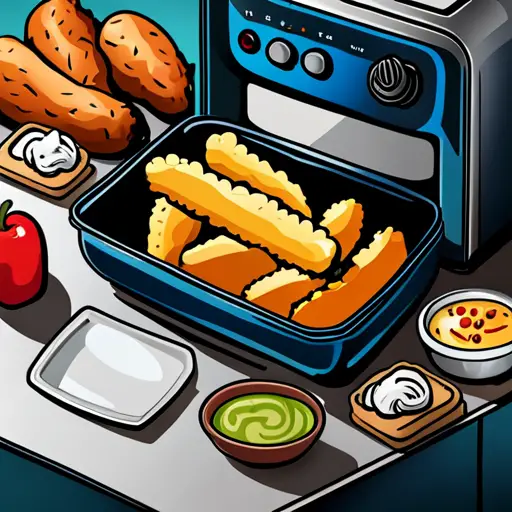

Do you love the convenience of cooking with an air fryer but wonder if it's safe to use plastic containers or bags? You're not alone. Many people have concerns about using plastic in an air fryer, especially with the potential risks of toxic chemicals and fumes.
Before you start cooking with plastic in your air fryer, it's important to understand the risks and identify safe plastics for use. In this article, we'll explore the different types of plastics that are safe to use in an air fryer, as well as tips for avoiding toxic chemicals and fumes.
We'll also discuss alternative materials for air fryer cooking, so you can make informed decisions that prioritize your safety and health.
So, let's dive in!
Contents
Using plastic in an air fryer can be risky. It may melt and create a mess of melted and burned plastic in the appliance, making it difficult to clean and damaging the air fryer. Additionally, the melted plastic could release harmful chemicals that are hazardous to health.
When plastic is heated beyond its melting point, it can release toxic chemicals like BPA and phthalates, which can leach into your food. These chemicals are known to cause health problems, including hormonal imbalances, reproductive issues, and cancer.
Therefore, it's crucial to avoid using plastic in an air fryer and opt for safer alternatives. In the next section, we'll discuss how to identify safe plastics for air fryer use.
It's important to identify which types of plastics are safe to use in an air fryer. Not all plastics are created equal, and some may release harmful chemicals when exposed to high heat. To ensure your safety, here are some safe plastics to use in your air fryer:
Now that you know which plastics are safe to use in your air fryer, it's important to also be aware of the potential dangers of using certain materials.
In the next section, we'll discuss how to avoid toxic chemicals and fumes while using your air fryer.
To steer clear of noxious fumes and hazardous substances, make sure to select appropriate materials when cooking with your air fryer. When using plastic in your air fryer, it's important to avoid toxic chemicals and fumes that may be emitted during cooking.
Some plastics, such as PVC or polycarbonate, can release harmful chemicals when exposed to high temperatures. These chemicals can be dangerous to your health, particularly if ingested.
To avoid these risks, choose plastic containers that are labeled as microwave safe or oven safe. These plastics are typically made from safer materials, such as silicone or polypropylene, and can withstand high temperatures without releasing toxic chemicals.
By making these simple choices, you can ensure that your air fryer meals are both delicious and safe. Next, we'll discuss some tips for properly using plastic in an air fryer.
When cooking with plastic containers in your air fryer, make sure to select microwave-safe or oven-safe options to avoid exposing yourself to harmful chemicals and fumes. Not all plastic containers are created equal, and some may release toxic chemicals when exposed to high temperatures. Always check the label or packaging of the plastic containers before using them in your air fryer to ensure they can withstand the heat and won't release harmful chemicals into your food.
Additionally, it's important to avoid using plastic containers that are scratched or damaged as they may release even more chemicals when heated. When using plastic in your air fryer, be sure to use it sparingly and only when necessary. Consider exploring alternative materials for air fryer cooking, such as silicone or glass, which are known to be safer options.
By taking these precautions, you can enjoy delicious and healthy meals without compromising your health and safety.
Consider trying out silicone or glass as safer alternatives for cooking in the air fryer. These materials are known to be less harmful and offer a more sustainable option for your health and the environment. Unlike plastic, silicone can withstand higher temperatures and won't release harmful chemicals into your food. It's also non-stick, making it easy to clean and reuse.
Similarly, glass is a great option as it's non-reactive and won't leach chemicals into your food. Plus, it's durable and can be used over and over again. Using alternative materials for air fryer cooking not only ensures your safety but also contributes to a sustainable environment.
As we become more aware of the impact of plastic on the planet, it's important to make conscious decisions to reduce our plastic use. By opting for silicone or glass, we can reduce the amount of plastic waste in our kitchens and make a positive impact on the environment. So next time you're cooking in the air fryer, consider trying out these safer and more sustainable alternatives.
Do not cook raw meat in an air fryer with plastic. It can release toxic chemicals and cause a fire. Always use materials that are safe for high heat, such as metal or silicone. Stay safe while cooking!
You should avoid using plastic wrap to cover your food in an air fryer as it can melt and release harmful chemicals. Instead, use a heat-resistant, non-stick cover or a lid that comes with your air fryer for safe and delicious meals.
You should avoid using plastic utensils to stir or flip food in your air fryer. They can melt and potentially contaminate your food. Opt for heat-safe utensils like silicone or metal to keep your meals safe and delicious.
Using plastic in an air fryer can affect the taste of your food. The heat can cause the plastic to melt and release toxic chemicals. Stick to using heat-resistant utensils and cookware to ensure your food remains safe and delicious.
It's not safe to reuse plastic containers that have been used in an air fryer. The heat from the air fryer can cause the plastic to release harmful chemicals, which can contaminate your food. It's best to use heat-resistant containers made specifically for air frying.
So, can you put plastic in an air fryer? The short answer is no.
While some plastics may be safe for use in an air fryer, it's generally not recommended due to the risk of melting, releasing toxic fumes, and potentially contaminating your food.
However, if you do choose to use plastic in your air fryer, make sure to use only safe plastics that are labeled as microwave and oven-safe. Additionally, always monitor your air fryer while in use and avoid using plastic items that are cracked or damaged.
Ultimately, it's best to explore alternative materials for air fryer cooking, such as silicone or stainless steel, to ensure the safety and quality of your meals.


